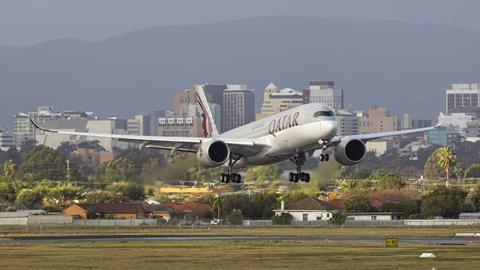IATA figures show global air cargo demand dropped in September 2022 compared to the prior-year period

The International Air Transport Association (IATA) today (7 November) released data for September 2022 global air cargo markets showing that air cargo demand softened.
Global demand, measured in cargo tonne-kilometers (CTKs), fell 10.6% compared to September 2021 (-10.6% also for international operations), but continued to track at near pre-pandemic levels (-3.6%).
Capacity was 2.4% above September 2021 (+5.0% for international operations) but still 7.4% below September 2019 levels (-8.1% for international operations), IATA said.
“While air cargo’s activity continues to track near to 2019 levels, volumes remain below 2021’s exceptional performance as the industry faces some headwinds,” said Willie Walsh, IATA’s director general.
”At the consumer level, with travel restrictions lifting post-pandemic, people are likely to spend more on vacation travel and less on e-commerce. And at the macro-level, increasing recession warnings are likely to have a negative impact on the global flows of goods and services, balanced slightly by a stabilization of oil prices. Against this backdrop, air cargo is bearing up well. And a strategic slow-down in capacity growth from 6.3% in August to 2.4% in September demonstrates the flexibility the industry has in adjusting to economic developments.”
Looking at regional performance, Asia-Pacific airlines saw their air cargo volumes decrease by 10.7% in September 2022 compared to the same month in 2021. This was a decline in performance compared to August (-8.3%). Airlines in the region continue to be impacted by the conflict in Ukraine, labour shortages, and lower levels of trade and manufacturing activity due to Omicron-related restrictions in China. Available capacity in the region increased by 2.8% compared to 2021.
North American carriers posted a 6% decrease in cargo volumes in September 2022 compared to the same month in 2021. This was a decline in performance compared to August (3.4%). Capacity was up 4.6% compared to September 2021.
European carriers saw a 15.6% decrease in cargo volumes in September 2022 compared to the same month in 2021. This was on a par with August’s performance (-15.1%). This is attributable to the war in Ukraine. Labour shortages and high inflation levels, most notably in Turkey, also affected volumes. Capacity increased 0.2% in September 2022 compared to September 2021.
Middle Eastern carriers experienced a 15.8% year-on-year decrease in cargo volumes in September 2022. This was the worst performance of all regions and a significant decline compared to the previous month (-11.3%). Stagnant cargo volumes to/from Europe impacted the region’s performance. Capacity was down 2.8% compared to September 2021.
Latin American carriers reported an increase of 10.8% in cargo volumes in September 2022 compared to September 2021. This was the strongest performance of all regions. Airlines in this region have shown optimism by introducing new services and capacity, and in some cases investing in additional aircraft for air cargo in the coming months. Capacity in September was up 18.4% compared to the same month in 2021.
African airlines saw cargo volumes increase by 0.1% in September 2022 compared to September 2021. This was a slight decrease in the growth recorded the previous month (1.0%). Capacity was 4.1% below September 2021 levels.



